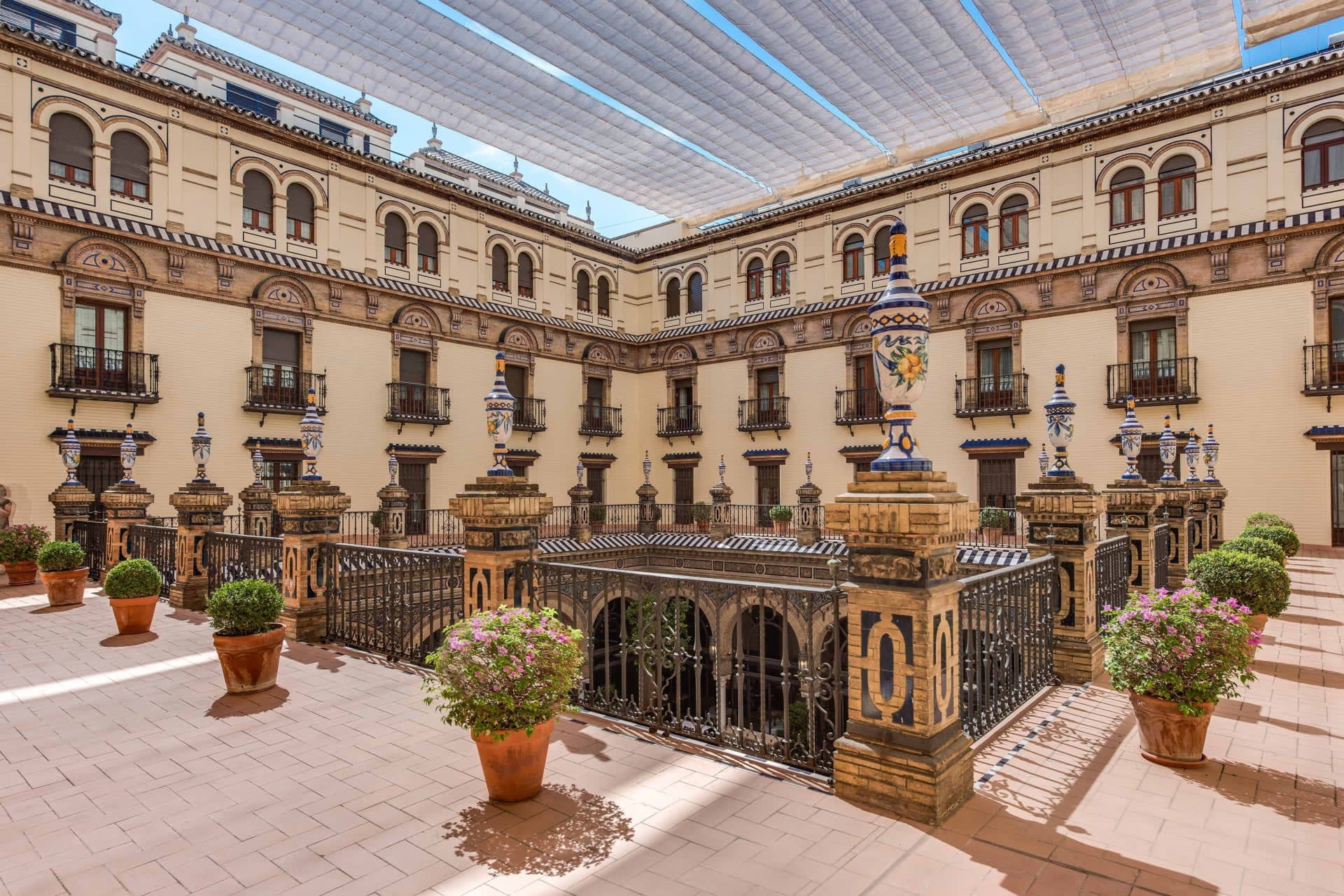
Image courtesy of Hotel Alfonso XIII, A Luxury Collection Hotel, Seville
Seville's best areas to stay showcase its history, gastronomy and vibrancy.
“Seville has something for everyone, whether you want to wake up to cathedral views in Santa Cruz, explore flamenco culture in Triana or enjoy a stylish stay in El Arenal,” Fora Advisor Patricia Caruso said. “This is definitely a city that stole my heart!”
Below, we discuss where to stay in Seville and share insights from Fora travel advisors.
El Centro, Casco Antiguo
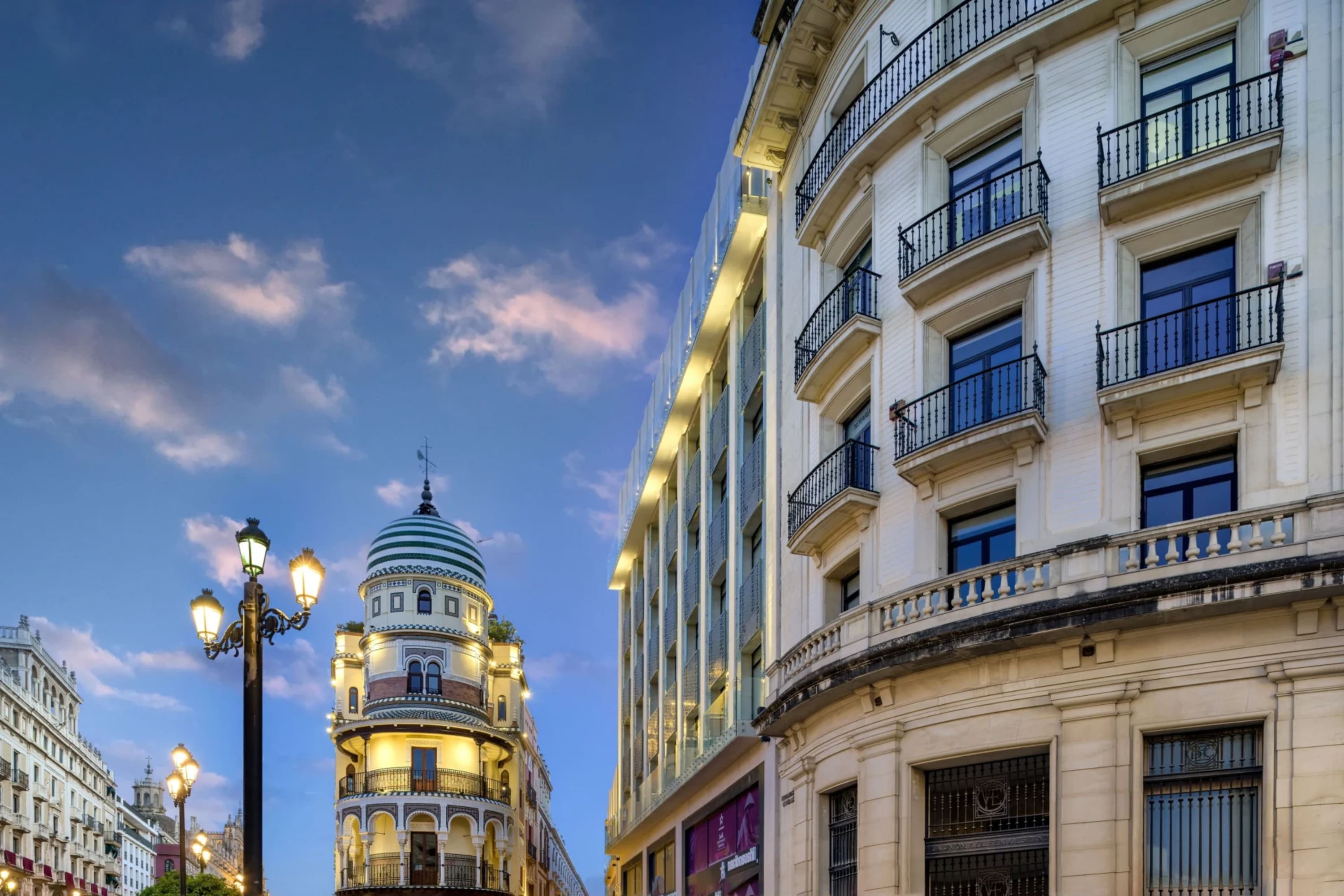
Image courtesy of Querencia de Sevilla, Autograph Collection
El Centro, part of Casco Antiguo (Old Town), is Seville’s dynamic heart. It’s where to stay in Seville if you’re looking for convenient access to the rest of the city’s Old Town neighborhoods. Here, rich history and modern culture converge to pair iconic landmarks with a maze of narrow, winding streets filled with tapas bars, boutiques and plazas.
“El Centro is great for those who like to be in the middle of all of the action,” Fora Advisor and former Seville resident Annie Decker asserted.
Architecture styles dating back to the Moorish occupation all the way through the Modernista era provide a romantic backdrop for sightseeing and sampling Andalusian gastronomy (Seville is one of best places to go in Spain for foodies).
Highlight: Seville Cathedral
The Seville Cathedral has been a fixture of El Centro for centuries. Construction on the Seville Cathedral — officially the Catedral de Santa María de la Sede — began in 1401. The cathedral was built on the site of a former Moorish mosque, and took over a century to complete. The resulting site remains one of the largest examples of Gothic architecture in the world. If you’re pairing a visit to the cathedral with lunch or dinner, Patricia recommended avoiding the nearby tourist traps. Instead, venture a few streets away, where you’ll find authentic eateries.
Where to stay in El Centro, Seville: Querencia de Sevilla or Hotel EME Catedral Mercer

Image courtesy of Querencia de Sevilla, Autograph Collection
Querencia de Sevilla and Hotel EME Catedral Mercer are both solid hotel options just moments away from the Seville Cathedral. The former’s façade allows it to blend in with its historic surroundings, but inside, the property has a fresh and colorful design that belongs more to the city’s contemporary culture. Rooms have a residential vibe and Marriott’s familiar service. The latter hotel is an upscale boutique property with a chic, minimalist design. Its rooftop pool area provides unbeatable views of La Giralda, the Seville Cathedral’s bell tower
Fora’s Marriott LUMINOUS partner perks at Querencia de Sevilla, Autograph Collection include a $100 hotel credit, a welcome amenity, daily breakfast, an upgrade and extended check-in/out whenever possible.
Santa Cruz, Casco Antiguo
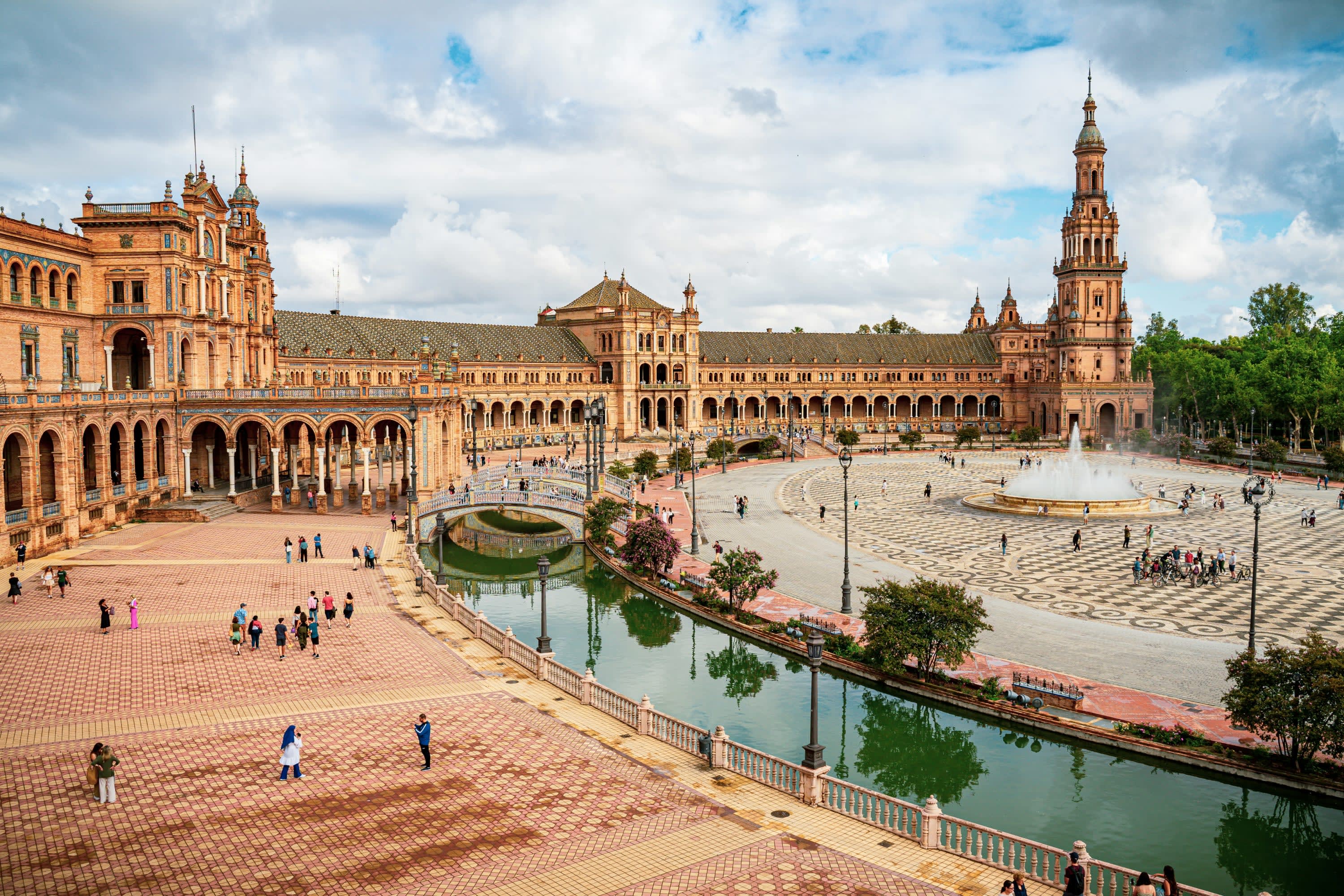
Santa Cruz is Seville’s former Jewish quarter and arguably its most famous neighborhood. Moorish influence is abundant in this corner of Old Town. Whitewashed buildings with tile roofs dominate many of the area’s pleasant streets, particularly as you approach the Royal Alcázar, the seat of Islamic rule prior to the Reconquista.
“Santa Cruz is Seville’s most charming neighborhood,” Patrica said. “It is perfect for first-time visitors, and where Seville’s history feels alive!”
That said, the neighborhood can be a little touristy — it’s exceptional for sightseeing, but you’ll often find more authentic meals and shops in the city’s less-traveled neighborhoods.
Highlights: The Royal Alcázar of Seville, Plaza de España and María Luisa Park
Santa Cruz is teeming with historical grandeur. The aforementioned Royal Alcázar is an architectural marvel that blends elements of Moorish and post-medieval European styles. The original structure dates back to the 10th century, with sections added by new dynasties over the past 1,000 years. You can tour many of the Alcázar’s well-preserved halls and gardens — but the top levels still serve as a temporary residence for the Spanish Monarchy any time they visit Seville.
“The Royal Alcázar is absolutely beautiful, and the architecture is truly spectacular,” Fora X Advisor Rachel Havens said. “Make sure to get tickets in advance!”
Neighboring Plaza de España is arguably Seville’s most celebrated landmark. Gardens and canals border grand boulevards while elegant bridges connect different sections, all culminating in a grandiose palace-like structure (many of the buildings now serve as government offices). The site was developed as the grand attraction of the Universal Exhibition of 1929, an early-20th-century festival celebrating Spanish culture and design. Elements of different Spanish architectural styles are incorporated throughout the space to highlight the country’s diverse past. María Luisa Park, an expansive greenspace filled with meandering paths, fountains and gardens, extends out from the plaza and offers a quiet breath of fresh air away from Seville’s busier streets. Fora X Advisor Alexandra Hepworth said Plaza de España is not to be missed, adding that horse-drawn carts add to the area’s romantic atmosphere.
Where to stay in Santa Cruz, Seville: Hotel Alfonso XIII
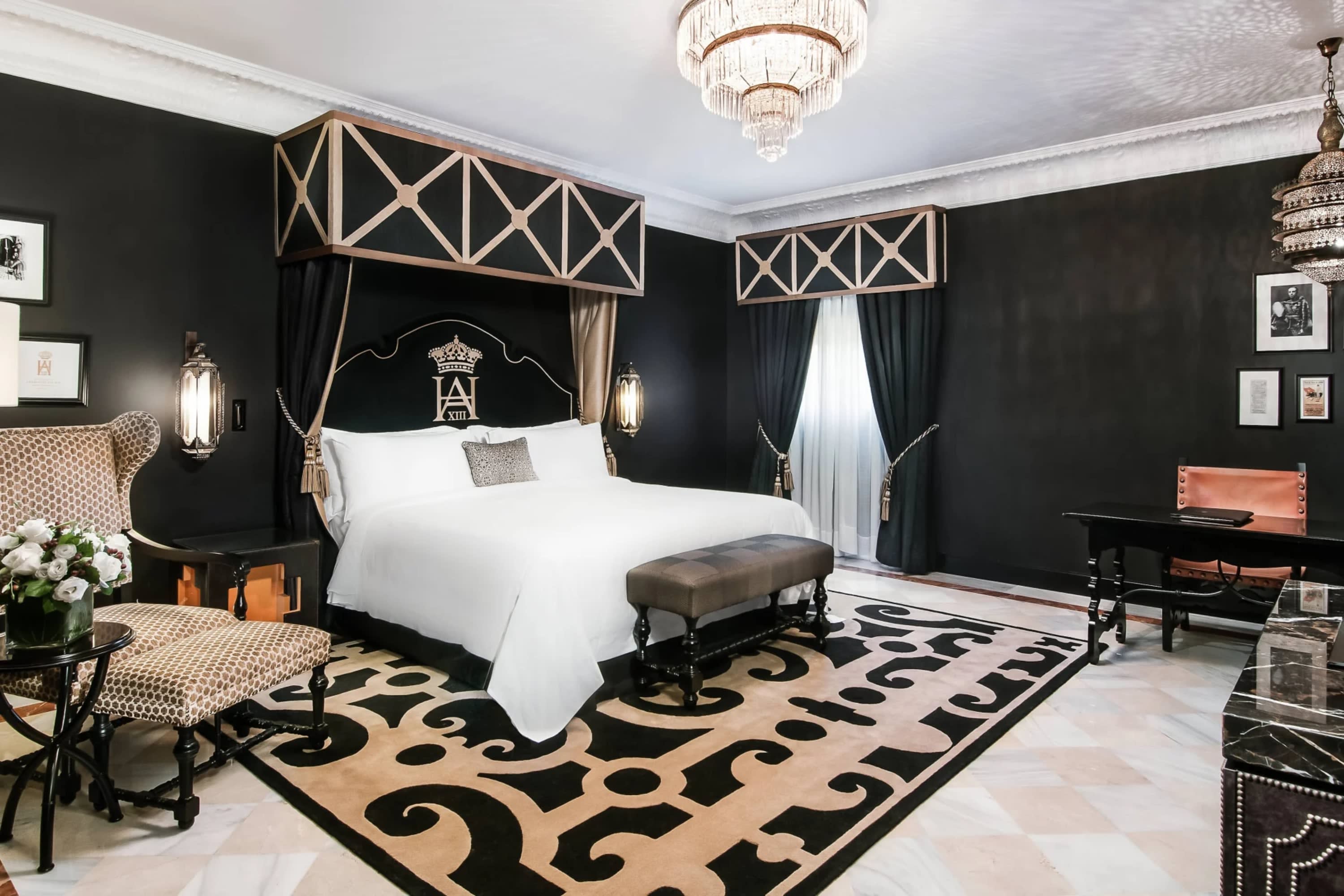
Image courtesy of Hotel Alfonso XIII, A Luxury Collection Hotel, Seville
Hotel Alfonso XIII is between the Royal Alcázar and the University of Seville (with Maria Luisa Park on the far side of the university). It was built at the same time as Plaza de España to host international VIPs as a grand gesture of Spanish hospitality. This is where to stay in Seville if you want to immerse yourself in one of Spain’s most luxurious urban hotels.
“Hotel Alfonso XIII is Seville’s most iconic hotel — it’s full of Moorish elegance and royal charm,” Patricia said.
Great care has been taken to preserve the hotel’s original spirit, and the design feels right at home amidst historical Santa Cruz. However, an equal effort has been made to ensure the property feels current and comfortable. Rooms acknowledge the significance of the hotel’s past while complementing vintage furniture with contemporary pieces.
Fora’s Marriott STARS partner perks include a $100 hotel credit, a welcome amenity, daily breakfast, an upgrade and extended check-in/out whenever possible.
El Arenal and Museo, Casco Antiguo

El Arenal and Museo stretch along the Alfonso XIII Canal to make up the western portion of Seville’s Old Town. Wider streets allow car travel but are still geared toward pedestrians, and are lined with shops and eateries. The vibe is usually a little quieter than Centro and Santa Cruz.
El Arenal is at the heart of Seville’s bullfighting tradition — along with historic buildings and, per Patricia, some of the city’s best tapas bars — while Museo hosts a variety of museums and exhibits. Both areas have several historical landmarks like the Torre del Oro, a medieval watchtower and the Seville Museum of Fine Arts.
Where to stay in El Arenal, Seville: Mercer Hotel Sevilla
The Mercer Hotel Sevilla is a luxe boutique hotel housed in a 19th-century mansion. Choose from exquisitely designed rooms and suites and enjoy tranquil spaces like the hotel’s central courtyard, a paragon of Andalusian architecture (and legacy of Moorish influence). Spanish culinary delights like Iberian ham and fresh Mediterranean prawns await at the intimate María Luisa Restaurant. And the hotel's prime location places you within walking distance of El Arenal’s iconic landmarks.
Fora Perks at Mercer Hotel Sevilla include welcome amenities, an upgrade and extended check-out whenever possible.
Where to stay in Museo, Seville: Hotel Colón Gran Meliá
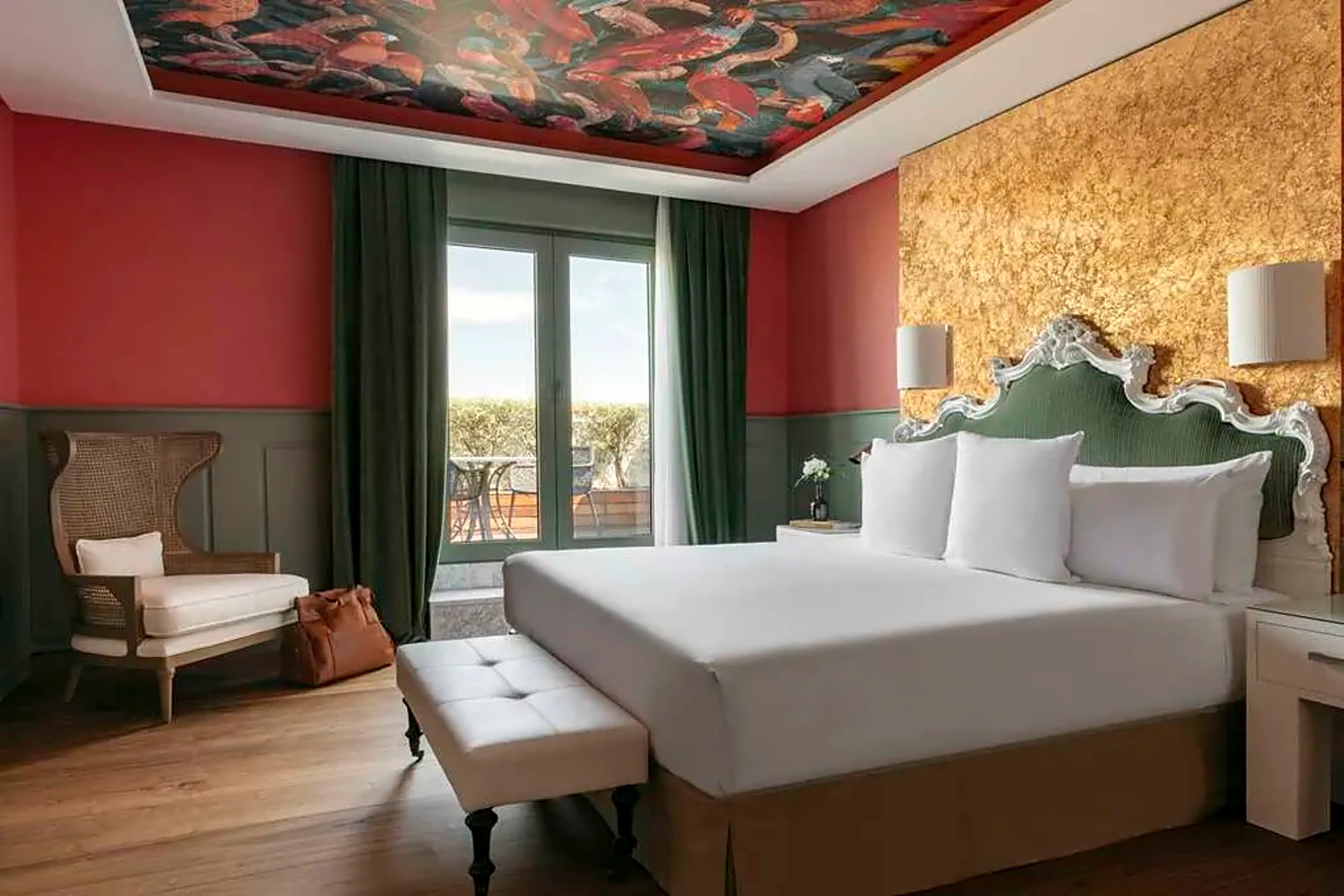
Image courtesy of Hotel Colón Gran Meliá
Hotel Colón Gran Meliá artfully combines traditional Andalusian charm with avant-garde luxury. Like Hotel Alfonso XIII, this property was dedicated for the Universal Exhibition in 1929 but has since evolved into a hip, contemporary space. Expect elegantly appointed rooms and suites, plus luxe wellness facilities, including a spa and fitness center.
Fora Perks at Hotel Colón Gran Meliá include a $100 food and beverage credit, daily breakfast, an upgrade and extended check-in/out whenever possible.
Alfalfa, Casco Antiguo
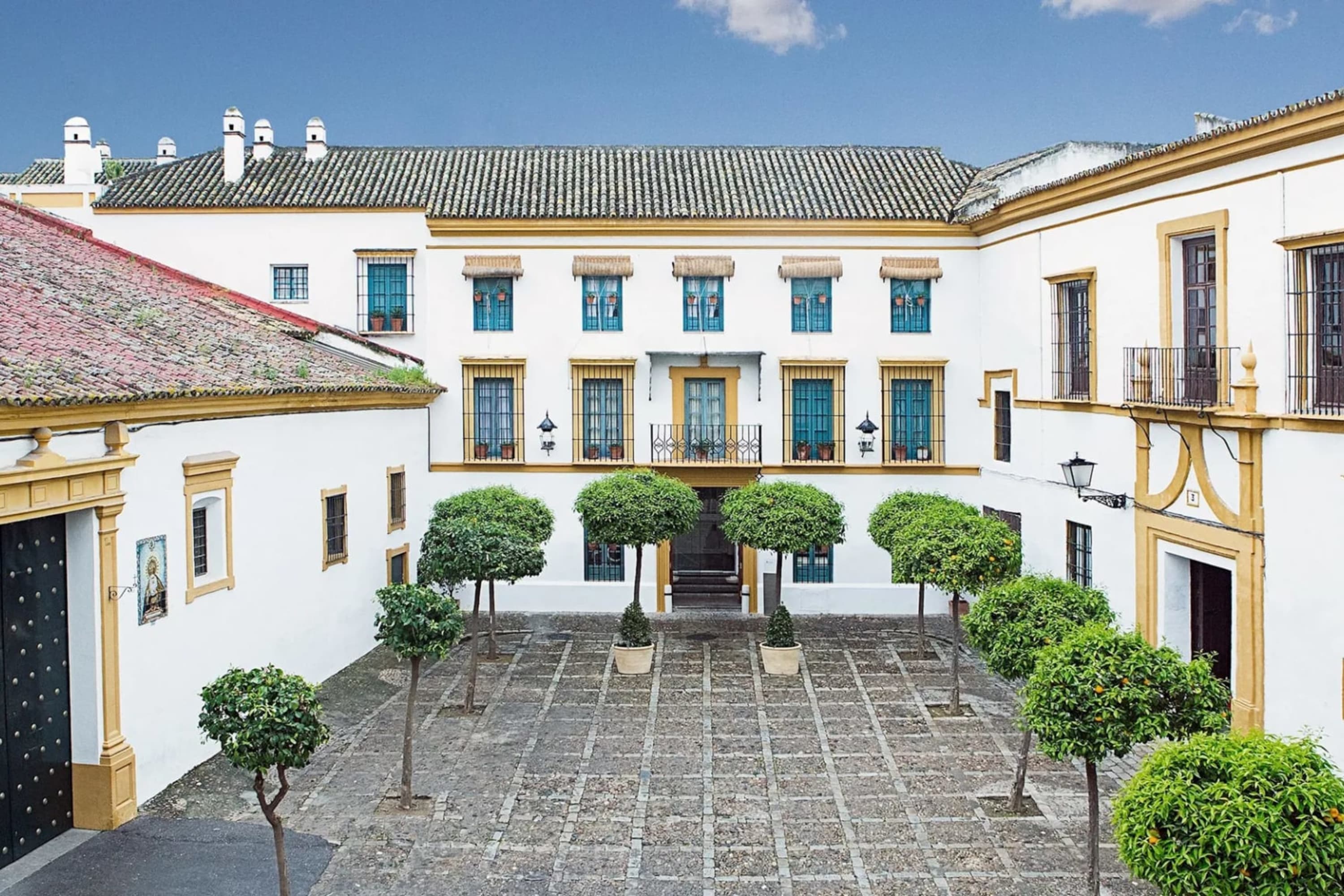
Image courtesy of Hospes Las Casas Del Rey De BaezaHospes Las Casas Del Rey De Baeza
Alfalfa is a quieter-by-day part of Seville’s Old Town to the east of El Centro. Modernista elements like azulejo tiles complement classical statues dating back to the time of the Roman Empire. At night, the neighborhood comes alive with trendy nightlife venues and buzzing local restaurants.
“Alfalfa is another excellent spot in the heart of the city,” Annie said. “You’ll be surrounded by incredible food and shopping without being directly in the center of the tourist district.”
Where to stay in Alfalfa, Seville: Hospes Las Casas Del Rey De Baeza
Hospes Las Casas Del Rey De Baeza is an intimate boutique hotel with a chic, lived-in vibe. Cozy rooms surround a quaint courtyard, while the main structure hosts a café with light bites on its rooftop terrace and a small spa.
Fora’s Design Hotels Collective Pro partner perks include daily breakfast, an upgrade and extended check-in/out whenever possible.
Triana
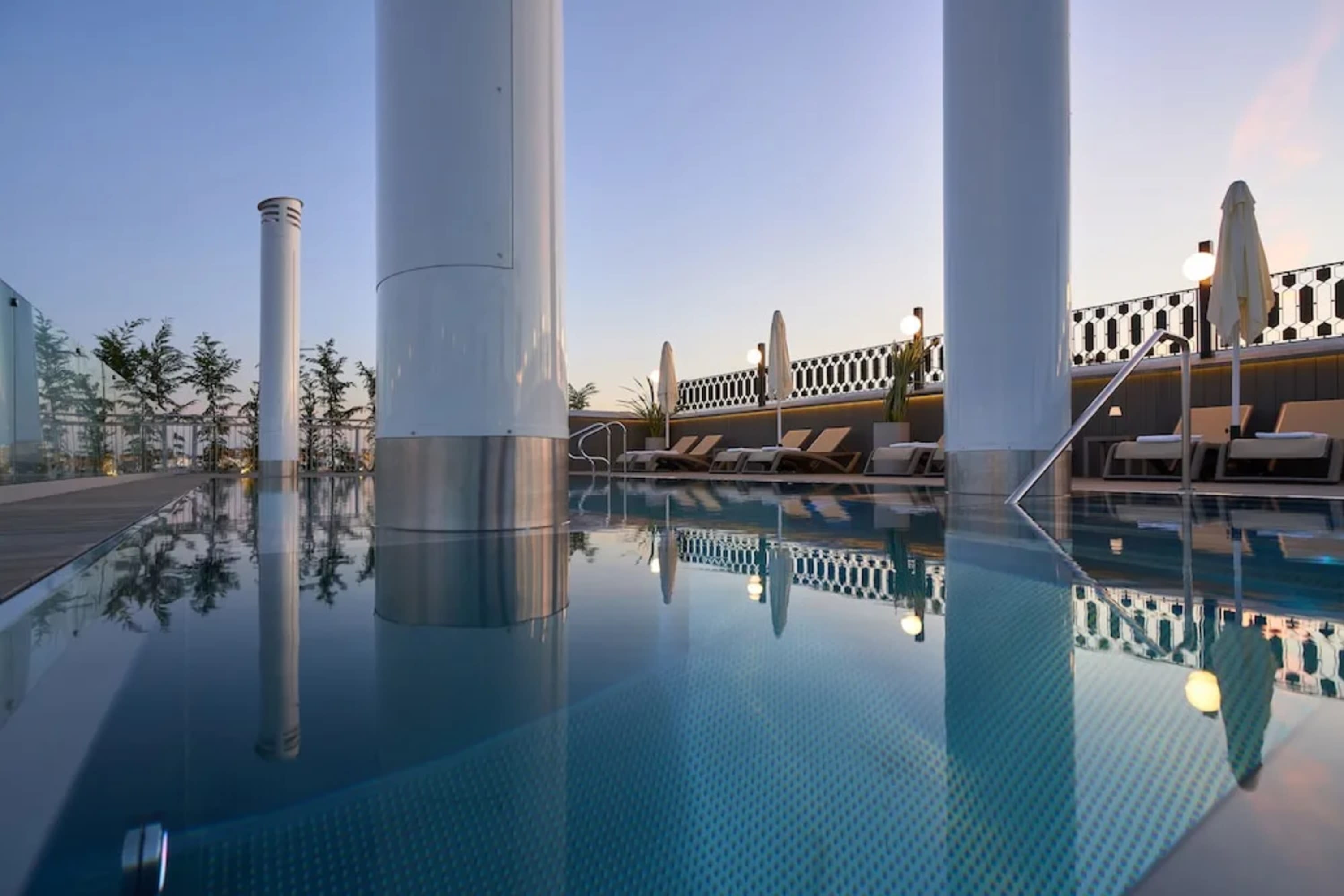
Image courtesy of Monte Triana
Triana is the only major area outside Old Town that still ranks among the best areas to stay in Seville. The hip neighborhood features a grand central market with local goods and eateries along with a waterfront promenade area with more local shops and pubs. Authentic flamenco venues dot the neighborhood as well.
“Triana is the perfect spot to get more of a local feel while still being within walking distance of all of the best spots in the city,” Annie said.
Three small bridges connect Triana to Old Town. Triana is also home to Seville’s best artisanal ceramics workshops — a tradition going back centuries — and a vibrant local nightlife, Patricia said. She added that night owls shouldn’t miss the authentic tapas bars.
Where to stay in Triana, Seville: Monte Triana
Monte Triana is where to stay in Seville if you’re looking for great value in your accommodations. Since Triana isn’t part of Old Town, you’re not paying Old Town rates — but the property still feels surprisingly upscale. Expect stellar service, trendy rooms and a relaxed atmosphere.
La Alameda, Casco Antiguo
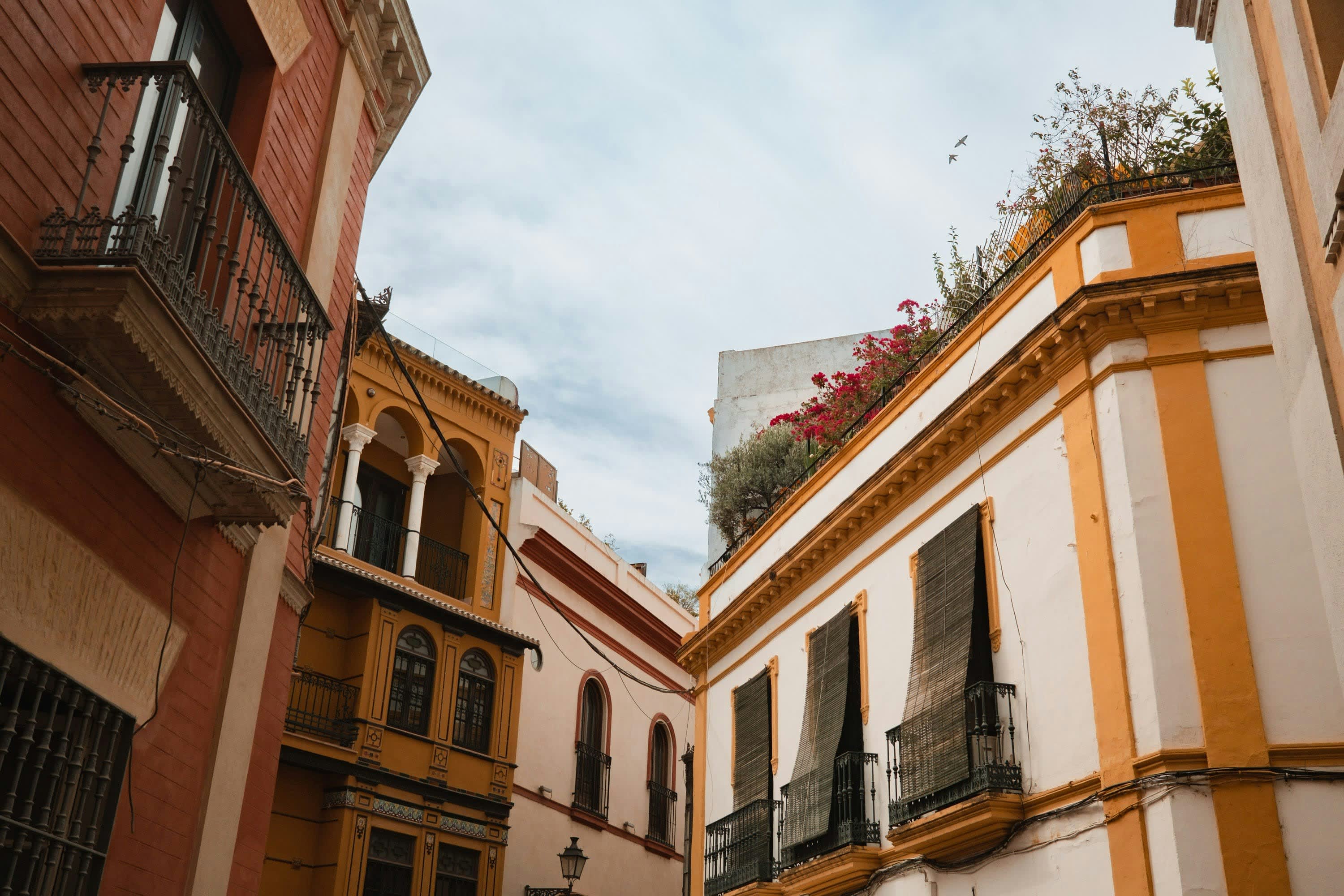
La Alameda represents the parts of Old Town north of El Centro and surrounding the Alameda de Hércules, a small and historic plaza dating back centuries. It’s a cool, low-key area with a youthful energy. The nightlife isn’t quite as electric as what you’ll find in Alfalfa, but it’s lively, nonetheless.
“This is a fantastic area for experiencing a different side of Seville, away from tourist crowds,” Patricia said. “La Alameda is perfect for young travelers, digital nomads and those who love a creative vibe.”
Fora Advisors’ tips for staying in Seville
Read on for more insights on visiting Seville.
“Take it slow, embrace the Andalusian way of life, and enjoy every bite, every flamenco rhythm and every sunset over the rooftops,” Patricia said.
2 to 4 days is enough to enjoy Seville’s best things to do
You can see most of Seville’s highlights in two to four days. Two days cover the main highlights like the Alcázar and Cathedral, while a third and fourth day allows you to explore neighborhoods like Santa Cruz and Triana at a leisurely pace. Virtually every advisor who responded to our poll recommended catching a Flamenco performance — Seville is thought to be the birthplace of the dance. (“Flamenco is more than a show, it’s part of Seville’s soul!” Patricia said.) Free shows are common in areas like Plaza de España, but small venues in neighborhoods like Triana tend to offer a more authentic experience.
Rachel recommended stopping at El Rinconcillo near Alfalfa for tapas. She added that it’s the oldest bar in Seville, having opened in 1670. This variety is what makes Seville one of the best places to visit in Spain for first-timers.
The city is a great stop on an Andalusia tour
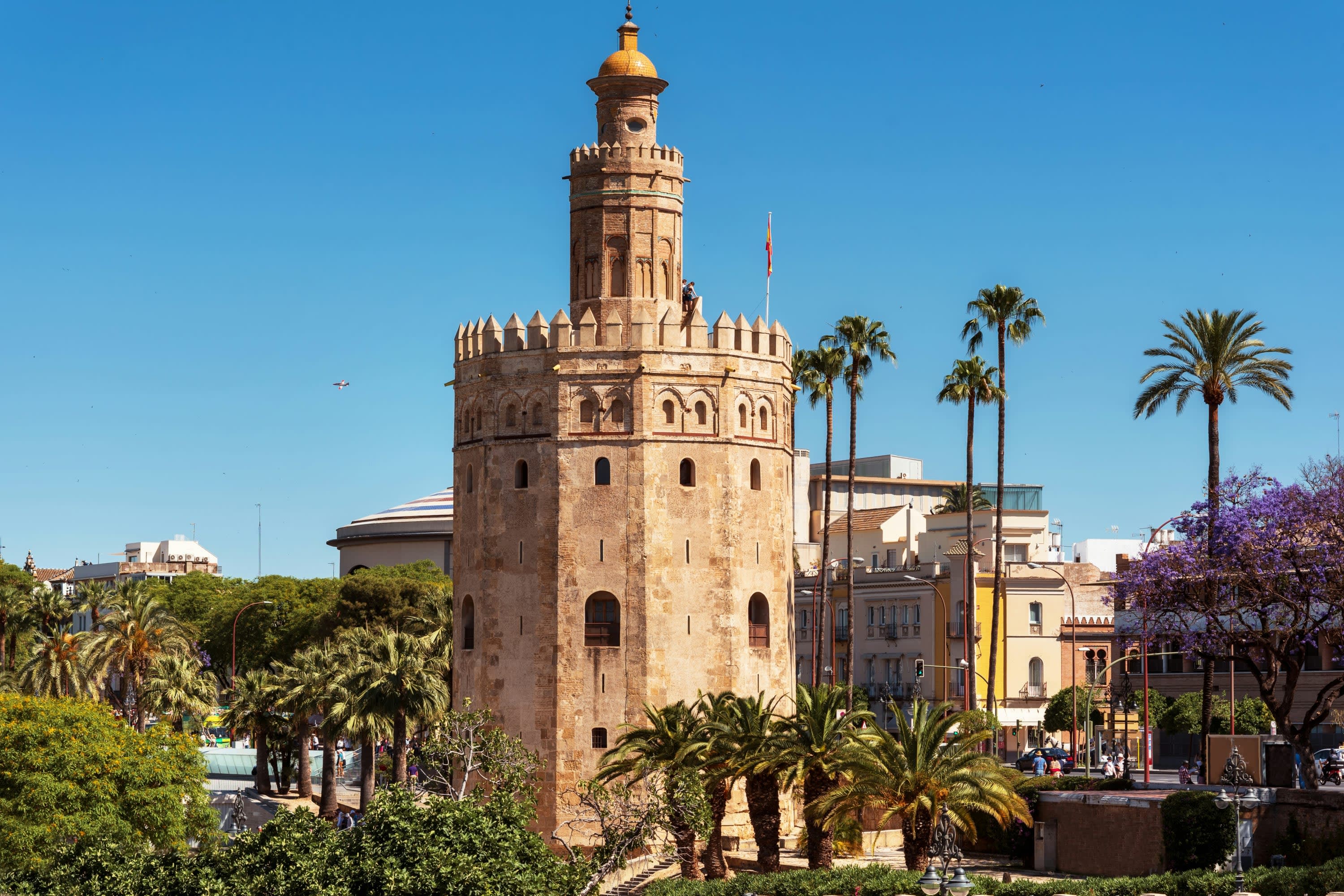
Seville is one of Spain’s top destinations, and often the first stop on a tour of Andalusia, the country’s autonomous southern region. Vibrant culture capitals, stunning landscapes and access to the Mediterranean places Andalusia high among the best European trips for families, couples and explorers. Other destinations include the seaside cities of Málaga, Marbella and Cádiz or medieval architecture hubs like Granada and Córdoba. (Check out the best hotels in Málaga or Marbella if you’re looking for a beach resort.)
Spring — especially during the Feria — and fall are the best times to visit Seville
Andalusia is very hot in summer; it’s common for locals to leave the cities for cooler destinations. In Seville, it’s normal for August temperatures to reach 104°F. The rest of the year offers far milder weather, and spring and fall pair the comfortable temperatures with lively streets and festivals. April is especially busy. Semana Santa — Holy Week — and Feria de Abril — a colorful six-day party with eating, drinking and dancing —- are both held during this month.
Seville is walkable and bike-friendly
Seville’s central neighborhoods are pedestrian-friendly. You can easily walk from one area to the next without the need for a car or bike; the latter are widely available across the city. Some of Seville’s central streets are adapted for cars, but most Fora Advisors recommended against driving around the city — unless you’re planning on visiting attractions outside of the central areas — as the streets are confusing to navigate and you won’t save time. Taxis and rideshare options are available, too, but may not be necessary given Seville’s condensed streets.
The city’s gastronomy is amazing (as is its tapas culture)
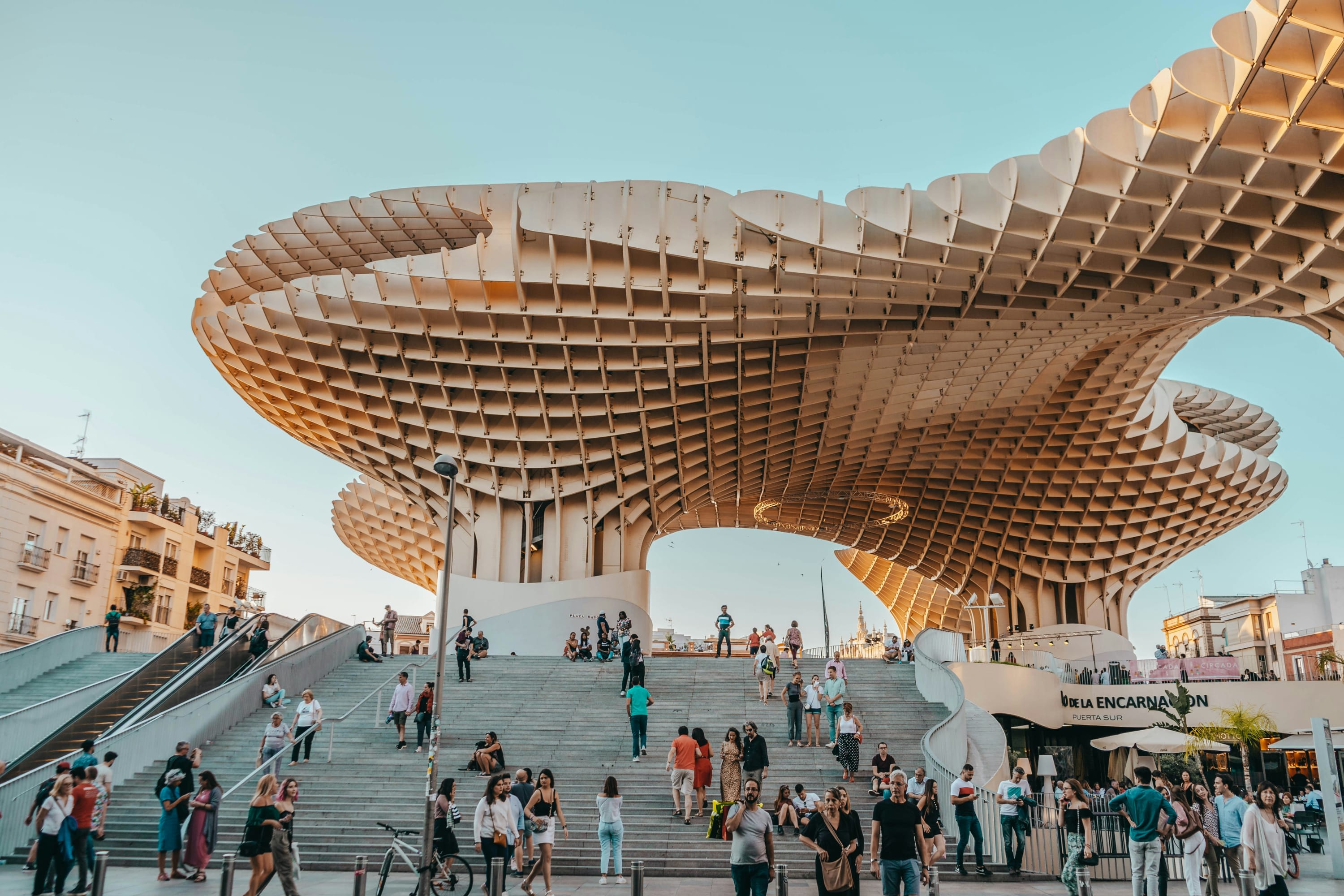
As the cosmopolitan capital of Andalusia, Seville excels at e international, regional Andalusian and local cuisine.
“Hopping from bar to bar and trying different tapas is the way to eat here,” Patricia said.
She recommended a few Seville favorites like jamón Ibérico (cured Iberian ham), huevos a la flamenca (baked eggs with chorizo and veggies) and choco frito (fried cuttlefish).
More Spain travel inspiration
Read more articles on destinations in Spain:
